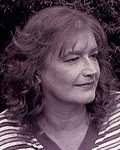By

Stop right here if you plan to go the self-publishing route. That has its own rules, and ones with which I’m not familiar. The kind of bromides I’m prepared to dispense wouldn’t be useful to you.
Otherwise, in no special order:
- Assume eventual success. Operate on the assumption that some book publisher, somewhere, someday, will buy your novel. Maybe not your first attempt at a novel, but your second or third. (Or fourth, which is what happened to me.) Or that a magazine editor will take your story or article. There is no point in slaving over a manuscript unless you’re convinced it will eventually appear in print. What’s worse is that if you do lose your confidence in eventually being published, you’ll lose the impetus to write, and what you do write thereafter will reflect that lack of enthusiasm and spirit.
- Be prepared for rejection. We sensitive artiste types are not known for having thick skin, but in this business—and it is a business—you have to develop the hide of a rhino. Otherwise, you’ll wilt and wither, because you will be rejected far, far more often than you will be accepted. Yes, it’s infuriating. Yes, it’s frustrating. And sometimes it seems to be totally arbitrary. But it’s part of the game. Everybody gets rejected.
- Take your work seriously, but don’t take yourself seriously. Do you want to be a writer, or do you want to be a poseur?
- Don’t be a prima donna. You are a writer. You are not Kim Kardashian.
- Get yourself a good literary agent. This is a necessity, and has been for decades. Most editors are far too busy to read manuscripts sent “over the transom,” which means mailed or emailed to them directly by the author. (Don’t email any manuscript to anyone unless specifically asked to do so; it will be automatically deleted.) Editors are also far more inclined to read work that has been sent to them by a reputable agent. As for getting an agent—it is hard, but it can be done. Do not send an agent a completed manuscript until he or she asks for one. Instead, write a literate, polite letter of inquiry introducing yourself, describing your work, and listing your credentials to write it. Three paragraphs on a single page should do that. The agent may thereafter ask for the three opening chapters and an outline of the rest, if she or he is interested in pursuing the project.
- Believe your editor. Should your novel be accepted—and when you learn of the acceptance, by the way, it will be somewhere in the Top Five Best Moments of Your Life—your editor will have a lot of suggestions for making it better. Pay attention. These people know of what they speak. If the editor says a scene needs to be cut, or developed, that is almost invariably the case. Don’t argue. Every single word you write is not sacred. If there’s a suggestion with which you really disagree, you can negotiate that—after you’ve followed the rest of the advice. Bonus: This will earn you a reputation for being professional, which is highly valued. Editors who have to work with temperamental celebrities (and their long-suffering ghost writers, who do all the heavy lifting) really appreciate working with sane, reasonable authors not suffering from clinical egomania.
- Be prepared to promote yourself. This is antithetical to most real writers, because it’s almost a contradiction in terms. This is also something at which I am really terrible, so all I can say is that you should never turn down an invitation to speak at a library, sign your work at a bookstore, or be interviewed on the radio, for a podcast, or appear on television. You should have an author website, and, when your work is published, an Amazon Author Page. Some writers—I am not one—find Twitter, LinkedIn, and Facebook useful.
- Write when you have something to say. I know that aspiring writers have been advised to write every day, for the practice of it, if nothing else. I don’t agree, because some days, you have absolutely nothing to say, and you end up churning out a useless batch of sludge. But, when the urge strikes you, you should by all means write. When the words come pouring out of you, instead of being forced through some mental extrusion process, it’s usually a good sign. Which leads me to point out that…
- If writing on a set schedule—say 9 a.m. to 4 p.m.—works for you, then by all means stick to it. If it doesn’t, go with what suits you best. The point is to get something good on the page, and no one cares how or when you do it, as long as you deliver it on deadline, or slightly before. (Meeting deadlines is essential.) Don’t let anyone tell you that you have to put in a nine-to-five day. Write when you write best, whether it’s four a.m. or 10 a.m.
- When you get discouraged, read, and re-read as necessary, Marge Piercy’s magnificent poem “For the young who want to.” This says everything that needs to be said to aspiring writers. I’ve been re-reading this for over thirty years. It never loses its impact.
For the moment, anyway, that about wraps up what I have to say to anyone who wants to write. But if you’ve borne with me thus far, let me share with you my absolute favorite rejection letter of all time. It was actually sent to my agent, and she phoned me to read it to me because she couldn’t believe it was really real. Ready? “Susan Kelly’s book is too well-written to be commercially viable.”

